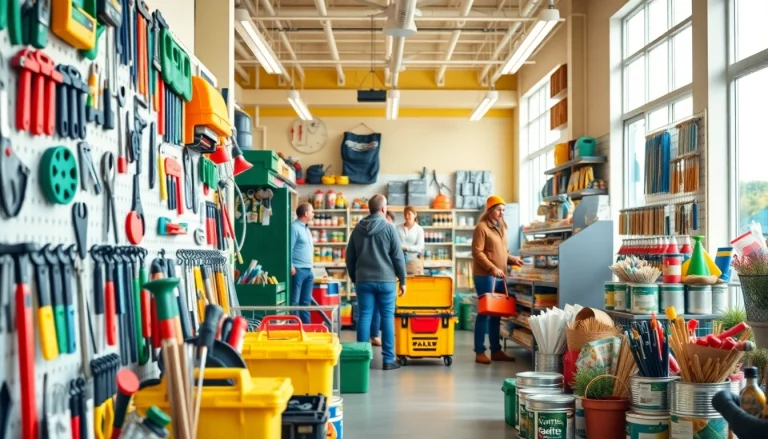
Understanding Common Prep Table Issues
Prep tables are essential components of many kitchens, especially in fast-paced environments like restaurants and catering services. These multifunctional surfaces allow for easy access to ingredients, ensuring efficiency and productivity in food preparation. However, like any equipment, they are susceptible to wear and tear that can affect their performance. Recognizing prep table repair needs early can prevent minor issues from escalating into costly repairs or replacements.
Identifying Frequent Problems
Several common issues can arise with prep tables, mostly revolving around their refrigeration systems, structural integrity, and usability. Some of the frequent problems include:
- Thermostat Control Failure: The inability to maintain proper temperatures can compromise food safety.
- Poor Door Seals: Gaps in seals can lead to temperature inconsistencies and energy inefficiency.
- Clogged Drains: Blocked drainage can cause water to accumulate, leading to mold growth and unpleasant odors.
- Physical Damage: Scratches, dents, or severe staining can impair functionality and aesthetics.
- Electrical Failures: Problems with fans, lights, or compressors can stop a prep table from operating effectively.
Importance of Regular Maintenance
Regular maintenance is not only crucial for extending the lifespan of prep tables but also vital for ensuring safety and compliance with health regulations. By implementing a maintenance schedule that includes cleaning, inspection, and servicing, kitchen managers can mitigate the risk of encountering major issues. Preventive maintenance not only helps in identifying problems before they lead to equipment failure but also enhances the overall efficiency of kitchen operations.
Indicators Your Prep Table Needs Repair
Recognizing when your prep table needs attention can save your business from potential disasters. Look for the following indicators:
- Inconsistent Temperatures: If the temperature fluctuates outside of safe food storage ranges, it’s a red flag that the fridge may need repair.
- Unusual Noises: Frequent running sounds, grinding, or hissing noises from the compressor or fans can indicate mechanical issues.
- Frost Buildup: Excessive frost can signal a problem with the defrost system, affecting temperature regulation.
- Leaking Water: Any accumulation of water indicates potential issues with the drain or insulation.
- Bad Odors: Unpleasant smells could indicate spoiled food, leaks, or mold growth, necessitating immediate inspection.
DIY Prep Table Repair Methods
In many cases, kitchen staff can perform basic repairs on prep tables themselves. Not only can this save time, but it can also reduce repair costs significantly. Here are some effective DIY methods for addressing common issues.
Tools Needed for Basic Repairs
Before embarking on repairs, it’s essential to gather the necessary tools. Common tools required for prep table repairs include:
- Socket Wrench Set
- Multimeter (for electrical checks)
- Putty Knife (for cleaning and scraping)
- Vacuum Cleaner (to remove debris)
- Flashlight (for inspecting hard-to-see areas)
- Replacement Parts (like door seals, thermostats, etc.)
- Cleaning Supplies (including sanitizers and degreasers)
Step-by-Step Guide to Common Fixes
While some repairs may require professional assistance, several common issues can be resolved through simple troubleshooting methods. Here’s a guide to some frequent fixes:
Fixing Temperature Control Issues
If your prep table is not maintaining the correct temperature:
- Check the thermostat setting; ensure it’s within the recommended range.
- Inspect for air obstructions; ensure vents are clear from items.
- Test the thermostat with a multimeter and replace it if necessary.
- Clean the condenser coils to improve efficiency.
Repairing Leaky Drainage
If water accumulates at the bottom of the table:
- Inspect the drain for blockages by removing any visible debris.
- Use a putty knife to dislodge clogs from the drain hole.
- Ensure that the drainage system is correctly aligned and free from kinks.
Safety Precautions While Repairing
Safety should always be a priority during any repair work. Follow these precautions:
- Unplug the unit before performing any electrical repairs.
- Wear protective gear, such as gloves and goggles, when handling cleaning chemicals.
- Ensure the workspace is well-lit and free from clutter.
- Be cautious of sharp edges and components during repairs.
When to Call a Professional for Prep Table Repair
While DIY repairs can solve many issues, some situations necessitate professional intervention. Knowing when to seek expert help is vital for ensuring the longevity and efficiency of your prep tables.
Signs You Need Expert Help
Consider contacting a professional if you observe:
- Complex Mechanical Failures: If the compressor isn’t working or there’s extensive damage.
- Electrical Issues: Any problems involving wires or connections can pose serious safety risks.
- Persistent Issues: When despite your efforts, problems continue to recur.
- Routine Maintenance Needs: For maintenance tasks that require specialized knowledge or tools.
Benefits of Hiring a Professional Service
Engaging a professional repair service can offer numerous advantages:
- Expert Diagnosis: Professionals come with the experience to accurately diagnose issues quickly.
- Quality Repairs: Using industry-grade tools and replacing parts ensures work done properly.
- Warranty Protection: Professional services often guarantee their work, providing peace of mind.
Cost Considerations for Professional Repairs
While DIY repairs might seem attractive from a cost perspective, hiring professionals can actually be more economical in the long run.
Cost factors to consider:
- The complexity of the repair: More complicated issues typically incur higher fees.
- Parts replacement: Costs for new components can vary greatly.
- The technician’s hourly rate: This varies by region and expertise.
Maintaining Your Prep Table for Longevity
Regular maintenance routines can significantly prolong the life of your prep tables. Implement these practices to maintain optimal functioning and safety.
Daily Cleaning and Upkeep Best Practices
A proactive approach to cleaning can prevent serious issues from developing. Follow these daily practices:
- Clean surfaces with appropriate sanitizers after each use.
- Check and clean the drain to prevent blockages.
- Inspect door seals for leaks and replace them if necessary.
- Wipe down the exterior with a damp cloth to keep it aesthetically pleasing.
Seasonal Maintenance Checklists
Seasonal upkeep should encompass thorough inspections to catch potential issues early. A checklist may include:
- Examine electrical connections for wear and tear.
- Clean coils and condensers to optimize energy efficiency.
- Check all moving parts, ensuring they’re functioning smoothly.
- Verify that temperature settings are accurate using a calibrated thermometer.
Choosing the Right Products for Care
Selecting the right cleaning and maintenance products is crucial. Opt for:
- Non-abrasive cleaners to avoid damaging surfaces.
- Biodegradable options to ensure environmental safety.
- Products specifically designed for commercial kitchen use.
Future-Proofing Your Prep Table Setup
As kitchen demands evolve, future-proofing your setup ensures your investment remains valuable and efficient.
Investing in Quality Equipment
Opt for high-quality prep tables from reputable manufacturers. Quality appliances often come with comprehensive warranties and durability that lowers repair costs over time.
Upgrading Features for Improved Efficiency
Consider implementing modern features, such as:
- Energy-efficient models to reduce operating costs.
- Integrated cutting boards and shelving for convenience.
- Smart technology for alerts and maintenance reminders.
Adapting to Changing Kitchen Needs
Be proactive in adapting your prep table setups to accommodate changes in menu offerings or kitchen workflows, ensuring that you can continue to deliver quality service efficiently. This flexibility can lead to increased productivity and a better overall experience both for staff and customers.




